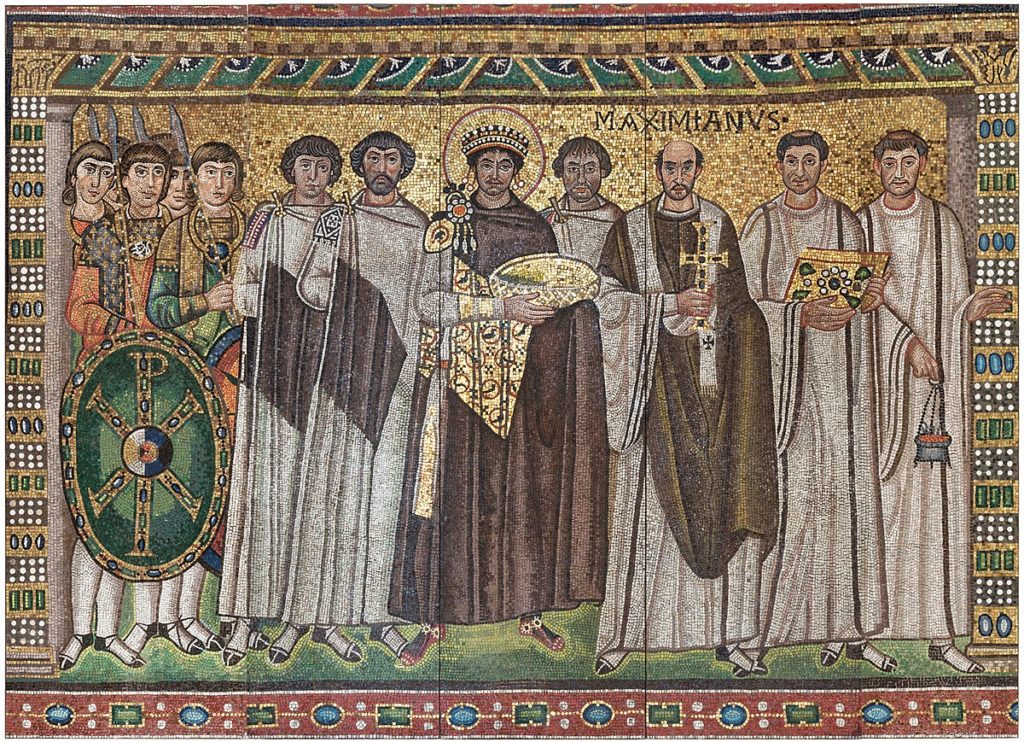
Greek was the predominant language spoken in the Byzantine Empire (Eastern Roman). Despite Romans establishing the empire, Latin was always ranked second.
The lands that Alexander the Great dominated during his conquests in Asia, the Middle East, and North Africa (around 330 BC), laid the groundwork for the Byzantine Empire, which lasted until 1453 AD.
When the Romans took over all the Greek city-states on mainland Greece, the Middle East, North Africa, and Anatolia by 146 BC, the Roman Empire was established.
Throughout most of its history, the western half of the Roman Empire used Latin for its official language, while the Eastern half used Greek.
Due to the presence of Ionian Greeks, Greek was widely spoken in many of those lands long before Alexander the Great conquered them.
However, during the Byzantine Empire, Greek was the language of government, military, and intellectual classes. Latin speakers were the lower-class peasants and soldiers.
The Byzantine Empire grew from the eastern half of the Roman Empire when Emperor Constantine moved the capital to the city of Byzantium in Thrace. This city was renamed Constantinople and eventually became the capital of the Eastern Roman Empire.
Αt the time, the Eastern Roman Empire included large swaths of eastern Europe, parts of Asia Minor, and North Africa. There were even colonies in Armenia, Cyprus, Egypt, Palestine, and Syria.
The Western Roman Empire fell in 476, when the German chieftain Odoacer deposed the last Roman emperor of the West, Romulus Augustulus. The East, always richer and stronger, continued on as the Byzantine Empire through the European Middle Ages up until 1453, when Constantinople was conquered by the Ottomans.
Byzantines Spoke the Greek Language
Greek was the official language of the Eastern Roman Empire, while Latin was the official language of the Western Roman Empire. Although Latin was the official language until the seventh century AD, it was never as popular as Greek. The Romans may have conquered Greece by 146 BC, but Greece “conquered” Rome in cultural terms. Undoubtedly, the Romans borrowed a lot from Greek culture in philosophy, poetry, architecture, sculpture, and the arts in general.
Greek literature and themes dominated Roman writing until the mid-third century BC. This was about a century after Alexander the Great had begun spreading Hellenism, including the Greek Koine language, throughout the vast areas he had conquered.
Roman aristocrats spoke Greek to show they were cultured. They brought in Greek pedagogues to teach their young. Quintilian, the famous Roman rhetorician of the first century BC, advocated for education in Greek since Roman children would naturally learn Latin on their own.
From the second century AD, it became common for the wealthy to send their already Greek-speaking but native-Latin-speaking Roman sons to Athens for higher education. The second century AD Roman Emperor Marcus Aurelius, who was also a Stoic philosopher, wrote his meditations in Greek, following the affectations popular with philosophers.
Prior to the Romans, Greeks used the term “barbarian” for people who did not speak the Greek language. The Romans in turn adopted the term for those who spoke neither Greek nor Latin.
In 330 AD, Roman Emperor Constantine I chose Byzantium as the site of a “New Rome,” or the new capital, and named the city Constantinople. Five years earlier, at the Council of Nicaea, Constantine had established Christianity, once an obscure Jewish sect, as Rome’s official religion.
The citizens of Constantinople and the rest of the Eastern Roman Empire identified strongly as Romans and Christians, though many of them spoke Greek rather than Latin. This was because the new capital lay in a largely Greek-speaking area. Even the Roman people of the city spoke Koine.

Justinian and the Greek Language Dominance
The so-called “Last of the Romans,” Emperor Justinian (r. 527-565), who was an Illyrian by birth, was a native Latin speaker. He made efforts to regain lands of the West lost to European barbarians.
His endeavor was to no avail, as the eastern part of the Byzantine Empire was also not secure. He concentrated on the eastern part of the Empire. Justinian permitted Greek as the official language for documents concerning the Greek-speaking areas. His successors followed this path. Greek was increasingly preferred and began replacing Latin in documents that addressed the entire Empire.
Following the progress of Hellenization in political, cultural, and eventually linguistic matters, Emperor Heraclius (r. 610-641) introduced Greek as the Byzantine Empire’s official language. Latin thus became only a ceremonial language.
Instead of being called by the Latin terms Imperator, Caesar, or Augustus, Heraclius was named Basileus (Βασίλευς) , the Greek word for king, though in this context, it is translated as emperor. The word Basileus can be traced back to the Mycenaean era.
Byzantine was generally known to many of its Western contemporaries as the Empire of the Greeks. This was because of the dominance of the Greek language, culture, and population. Greek was not only the official language but also the language of the church, literature, and commercial transactions.
An archaic style of Greek served as the language of administration and of most writing during the period of the Byzantines. The spoken language continued to develop without the archaizing tendencies of the written language. Byzantine Greek is still the liturgical language of the Greek Orthodox Church.
The popularity of the Greek language led to the spread of Greek culture. The Byzantine Empire stood out for its Christian religion and expression thereof in artwork. Byzantine art includes carved ivories, illuminated manuscripts, mosaics crafted out of glass, and stone. These mosaics were always honoring and respectful of Christianity and its components. Another form of Christian expression was in the form of icons.
See all the latest news from Greece and the world at Greekreporter.com. Contact our newsroom to report an update or send your story, photos and videos. Follow GR on Google News and subscribe here to our daily email!



